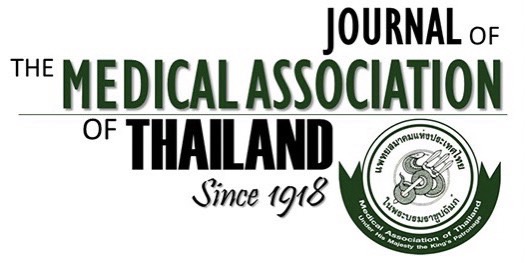Abdominal Aortic Calcifications in Patients with CKD and Cardiovascular Outcome
Somboon Apichaiyingyord¹, Bussaba Pakdirat², Warunyupa Ouklib²
Affiliation : ¹ Nephrology Unit, Department of Internal Medicine, Ratchaburi Hospital, Ratchaburi, Thailand; ² Radiology Unit, Department of Radiology, Ratchaburi Hospital, Ratchaburi, Thailand
Abstract
Background: Abdominal aortic calcification (AAC) is a marker of advanced atherosclerosis and has been associated with an increased risk of cardiovascular events and mortality in chronic kidney disease (CKD) patients.
Objective: To investigate the association between AAC and cardiovascular outcomes in CKD stage 3 to 5 dialysis patients, as well as the progression of AAC and its impact on end-stage kidney disease (ESKD) progression in CKD stage 3 to 5 non-dialysis patients.
Materials and Methods: The present study was a retrospective cohort and cross-sectional study included 90 CKD stage 3 to 5D patients from IMPACT CKD study at Ratchaburi Hospital. Baseline lateral abdominal radiograph was obtained in 2014 to assess the presence and severity of AAC using the Kauppila scoring system. Patients were retrospectively reviewed for ten years, and surviving patients underwent a second radiograph assessment for AAC progression. The primary outcome was the composite of cardiovascular events and all-cause mortality. Secondary outcomes included the progression of AAC and the development of ESKD requiring renal replacement therapy (RRT).
Results: Ninety CKD stage 3 to 5D patients were enrolled. Patients with diabetes, dyslipidemia, and history of congestive heart failure were more likely to have AAC at baseline. The presence of AAC at baseline had higher primary outcome at 64.1%, than those without AAC at baseline at 29.4%, hazard ratio 4.281 (95% CI 1.761 to 10.429, p=0.001). Among survivals, those with progressive AAC score were more likely to progress to ESKD and required RRT compared to those without AAC progression.
Conclusion: AAC is a significant risk factor for cardiovascular events and all-cause mortality in CKD stage 3 to 5D patients. Progression of AAC is associated with an increased risk of ESKD progression and need for RRT. Routine assessment of AAC using lateral abdominal radiograph may aid in risk stratification and guide appropriate management strategies to reduce cardiovascular and renal complication in the present study patient population.
Received 12 June 2024 | Revised 27 June 2024 | Accepted 2 July 2024
DOI: 10.35755/jmedassocthai.2024.8.14021
Keywords : Abdominal aortic calcification; Chronic kidney disease; End-stage kidney disease; Renal replacement therapy
All Articles
Download



